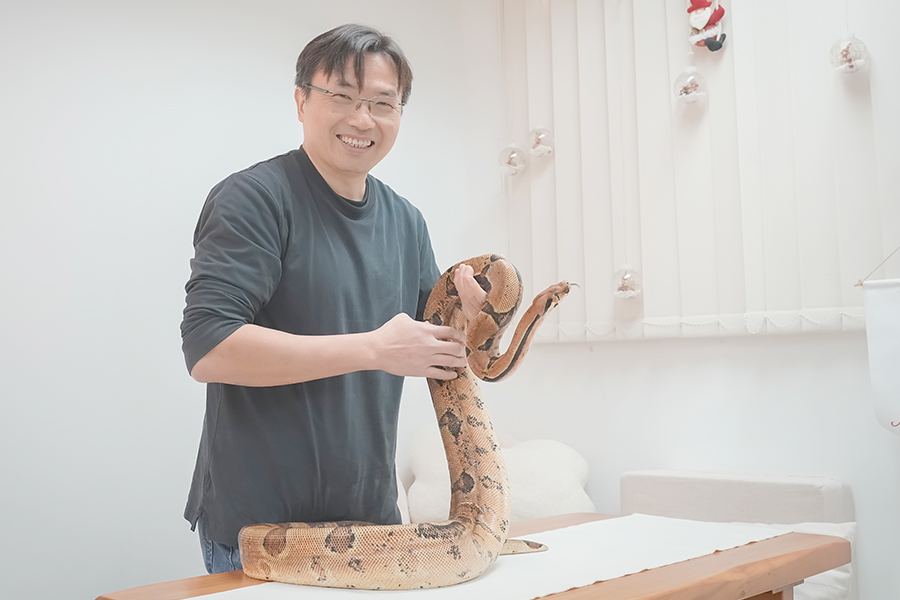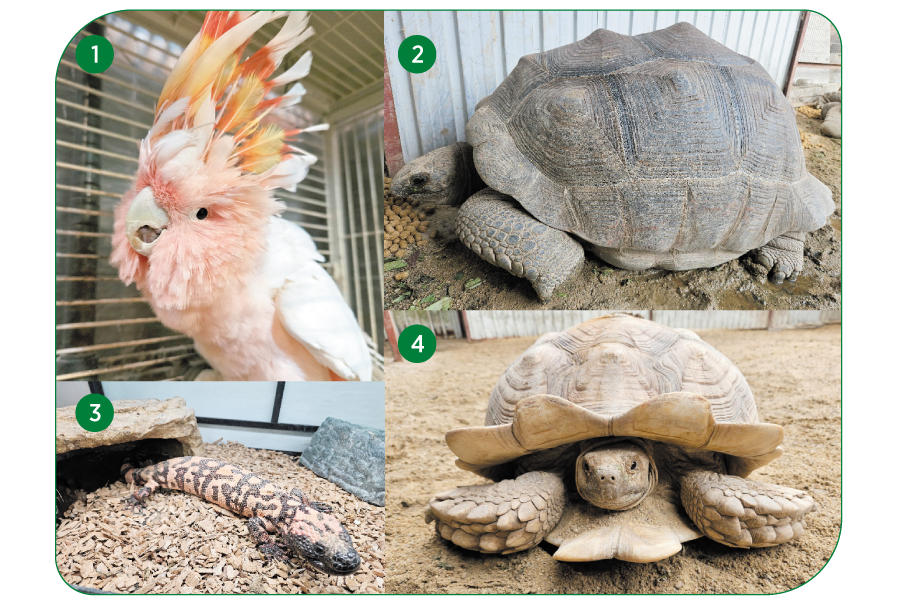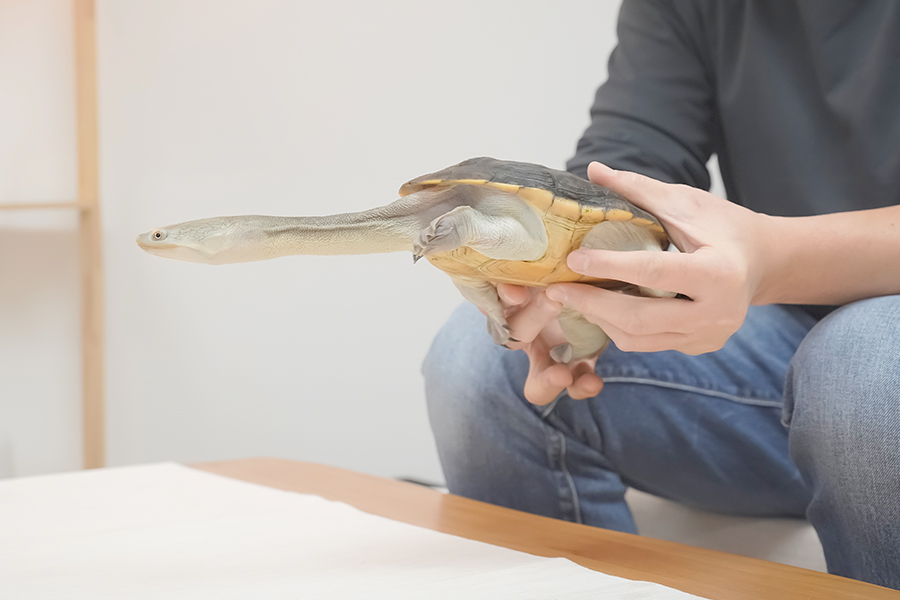An A&E doctor’s fatal passion for reptiles
 In Jin Yong’s famous martial arts novels, the character Ouyang Feng – also known as Western Venom – often carries a venomous snake. He was inspired by the snake and incorporated the Spirit Snake Fist and Spirit Snake Staff techniques into his fighting repertoire. North Lantau Hospital (NLTH) Accident and Emergency (A&E) Department Consultant Dr Wong Oi-fung has a similar interest in reptiles and has pets including a red-tailed boa called Peanut and a collection of venomous lizards Gila monster. But rather than martial arts, he uses his expertise to identify cures for snake bite victims and goes hiking at night to identify venomous snakes in the hillside.
In Jin Yong’s famous martial arts novels, the character Ouyang Feng – also known as Western Venom – often carries a venomous snake. He was inspired by the snake and incorporated the Spirit Snake Fist and Spirit Snake Staff techniques into his fighting repertoire. North Lantau Hospital (NLTH) Accident and Emergency (A&E) Department Consultant Dr Wong Oi-fung has a similar interest in reptiles and has pets including a red-tailed boa called Peanut and a collection of venomous lizards Gila monster. But rather than martial arts, he uses his expertise to identify cures for snake bite victims and goes hiking at night to identify venomous snakes in the hillside.
Since being given his first turtle by his parents before he began kindergarten, Dr Wong has had a lifelong passion for reptiles and currently keeps a python, 20 lizards including Gila monsters, and 60 turtles and tortoises, as well as four parrots. He learnt about Gila monsters as a child from the TV documentary First Life and went on to keep generations of the protected species.
 “When you keep reptiles, you need to understand their ecology and habits,” Dr Wong explains. “For example, some reptiles are imported from overseas and changes in temperature can affect their health.” He has sometimes been bitten by his pets, once getting a painful bite from a Gila monster which left a red mark, but Dr Wong recovered within a day.
“When you keep reptiles, you need to understand their ecology and habits,” Dr Wong explains. “For example, some reptiles are imported from overseas and changes in temperature can affect their health.” He has sometimes been bitten by his pets, once getting a painful bite from a Gila monster which left a red mark, but Dr Wong recovered within a day.
Identifying a lethal cargo
Dr Wong says he is not particularly interested in keeping venomous animals, but studying venomous animal bites instead. He goes hiking near the hospital after work with friends familiar with snakes to seek out different species of indigenous snakes. “Many people get bitten by venomous snakes while hiking or by their own pet snakes,” he says “My knowledge and experience can provide immediate treatment for patients.”On one occasion, a customs officer was bitten by venomous snakes while inspecting a package from overseas. Staff from the Agriculture, Fisheries and Conservation Department (AFCD) thought the snakes were from Southeast Asia, but Dr Wong examined the photos and discovered they were highly poisonous snake from Africa, giving the information needed for the customs officer to receive the correct management in time.
NLTH is located near popular hiking trails and its A&E receives snake bite cases from time to time. Previously, doctors had to consult snake experts to determine whether a snake was venomous but for the past decade, Dr Wong has been able to handle cases himself as his expertise has grown. He also publishes accounts of Hong Kong cases in foreign journals to help other healthcare professionals understand the toxicity of snakes.
Dr Wong’s collection of animals and reptiles helps relieve stress and teaches him valuable lessons. “Birds face storms with their heads held high, teaching me to face challenges ahead,” he reflects. Turtles, on the other hand, take life at their own pace and respond calmly to everything. “Life for us is similar,” says Dr Wong. “When we have to deal with pressure, we must learn to relax.”

What should you do if you are bitten by a snake?
If you are bitten by a snake, you should squeeze out the blood from the wound and then wash it with clean water, Dr Wong advises. Do not attempt to suck out the venom. You should not run, as this might speed up the passage of the venom and carry it around your body and into your circulation system and even nervous system more rapidly. Dr Wong suggests remaining calm, taking a photo of the snake, and seeking immediate medical assistance at the nearest A&E where the photo will help healthcare workers identify the snake species and provide the correct antivenom.Interview video